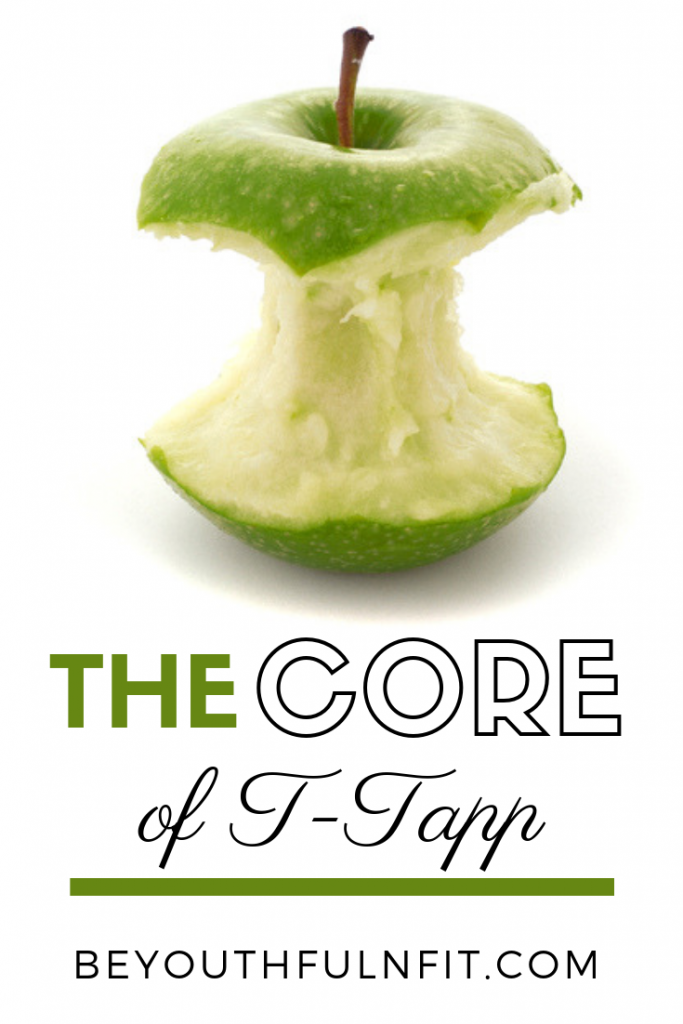
Core is one of the popular buzzwords in fitness today. T-Tapp has always been about the “core”. In earlier videos Teresa cues to “tuck butt”, however it’s not about the gluteus maximus but about the synergistic activation of core and glutes together–along with a host of other muscles!
In more recent videos Teresa cues “tuck/curl” or “curl the core” to better describe the functional alignment of “tucking” or core activation. It seems like a simple nuance of terms, but why is it important? What makes the “core” the CORE of T-Tapp?
Spinal Alignment
Alignment is important for optimal flexibility and fluidity in movement–and in holding your body upright (i.e. “good posture”)! Core muscles include muscles that run along your spine (and attach to it) that help you bend to one side or the other, twist your torso, even help you turn and tilt your head! When these muscles are injured or weak, you’re going to have more pain and less flexibility and functionality. A strong core distributes the “load” of standing or sitting upright as well as movement. When you have weak core muscles–tummy or spine muscles or both–other muscles are overworked and don’t function as well. Think of strong core muscles as everyone working together vs a few doing most of the work–and leading to “burn out”! (Or, in this case, sore muscles, injury, pain, spasms…no fun, right?!)
Flexibility
As mentioned above, the core muscles help you twist and bend and turn. Strong abdominal core muscles help you get up from the floor or a chair as well as prevent back strain and fatigue. If the muscles are stiff or weak, you won’t be able to twist or bend as far or as well, and you will have more trouble getting up from the floor. There are other issues that affect that as well, such as knee problems. Believe it or not, a strong core can help prevent knee issues as well as help rehab some knee problems!
Breathing
Your diaphragm is a part of the core as well! If you’re seated right now, slouch and let your ribcage sink into your tummy area. Slump those shoulders forward. (Oh, you were already sitting like that?!) Take a deep breath without changing your posture.
Now sit more upright. Pull the tummy in a bit and get the head aligned with ears over shoulders (no jutting your chin forward). Again, take a deep breath. AAAHHHH! Feel the difference?
No one can work well when squished! That includes your diaphragm! (And your stomach, intestines, etc, but we’ll talk about that another day!) Strong core muscles will help your alignment which in turn helps your breathing.
Pelvic Floor
A strong core helps pelvic floor function, too! In fact, when ladies first start Defeating Diastasis, my course to help close the diastasis recti “tummy gap” or to help strengthen their core, the first improvement many notice is less leaking and a stronger pelvic floor! This deserves a post of its own, so I will dig into this more in a future post. You can do kegels all day but if you don’t also strengthen your core muscles, any results will be short-lived.
And if you’re still not convinced….get back to that slouchy, shoulders forward, ribcage in your tummy position. Focus on your pelvic floor and cough. Now sit upright, head in alignment, ribs up….cough. Feel the difference? Slouchy/weak core means more bearing down on the pelvic floor. NOT what we want!
So Why Is the Core the CORE of T-Tapp?!
Curling the core and then tightening the gluteal muscles to “tuck” helps stabilize the lower body as you then perform the various movements in T-Tapp. Standing or on the floor it helps protect the back from injury by balancing the stabilization of core and glutes. While there are some moves that are more “neutral spine” in some workouts/moves, you are still focusing on core strength, even if you’re not fully “tucked”. I teach a more detailed breakdown of curling the core in my classes and client sessions, as well as in the Defeating Diastasis course. The bottom line is a strong core means better results from your workouts, less pain, less strain on joints, more flexibility and optimal functioning on many levels.
I’ll be digging into this more in the next few blog posts, but I will be sharing even more details with my Defeating Diastasis interest list. If you are interested in the next course of Defeating Diastasis (registration opening April 1), or if you want to learn even more about the core, you can check out the website and sign up for the list here —> Defeating Diastasis
If you have any questions, comment below or contact me! I’ll be sharing more details about the course itself with the interest list, too!
And BRAVO on improving your posture! You got a few inches taller just by reading this, didn’t you?! 🙂

